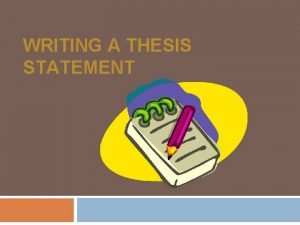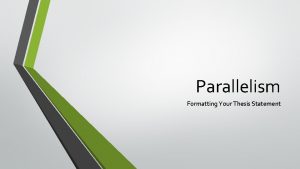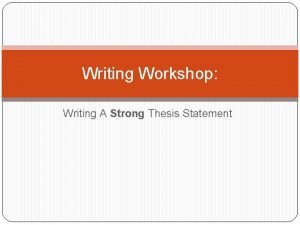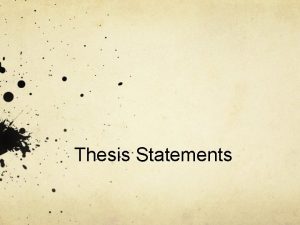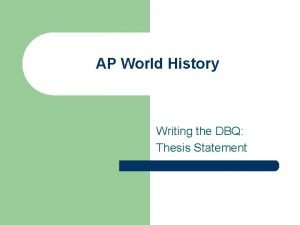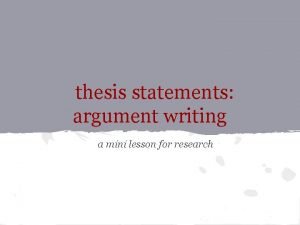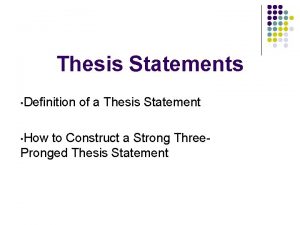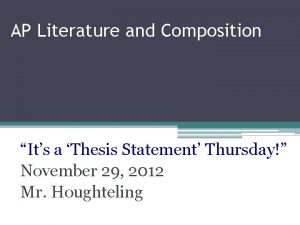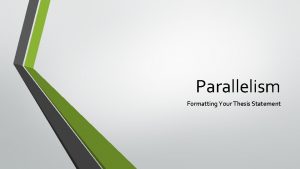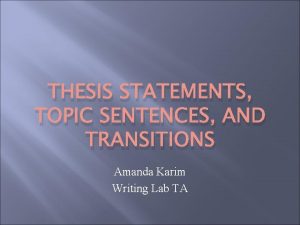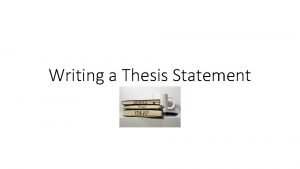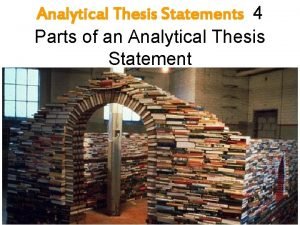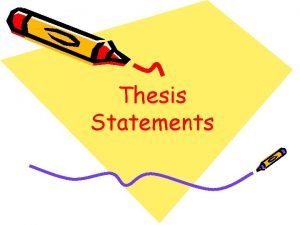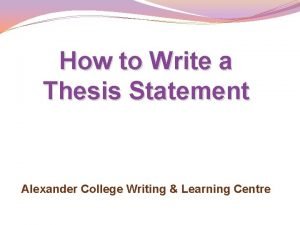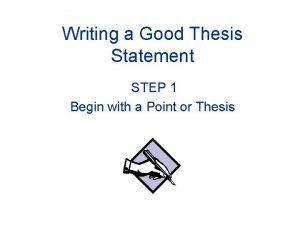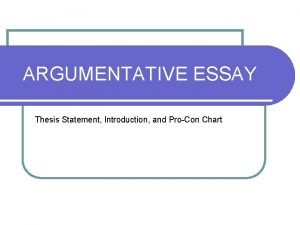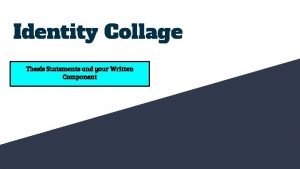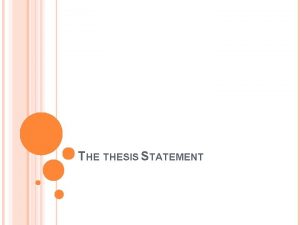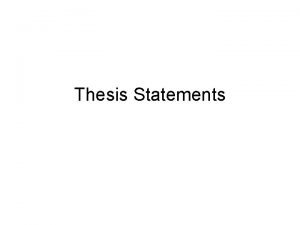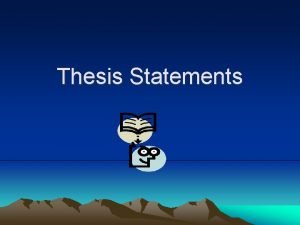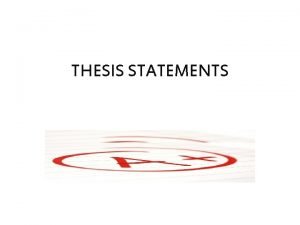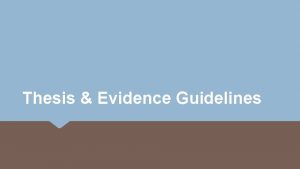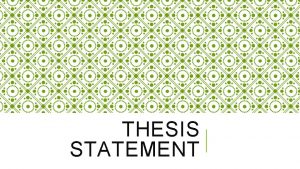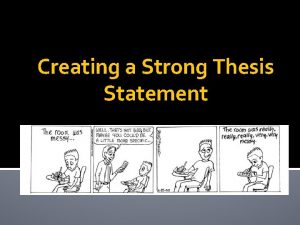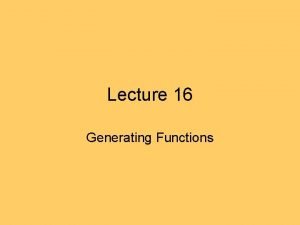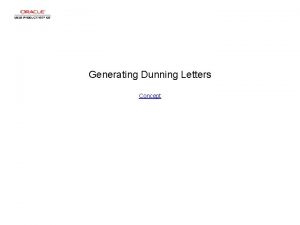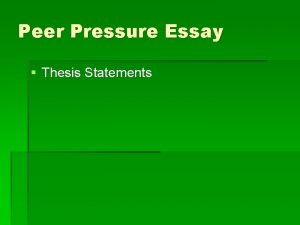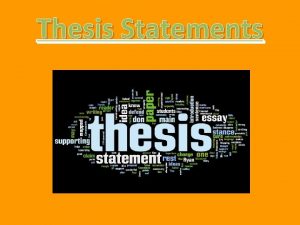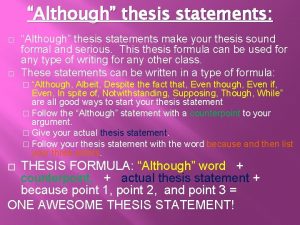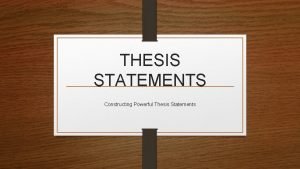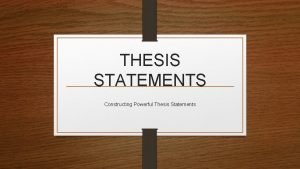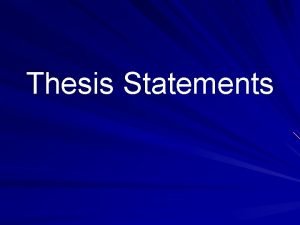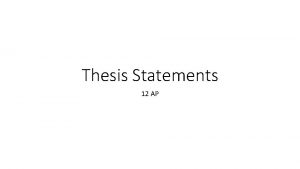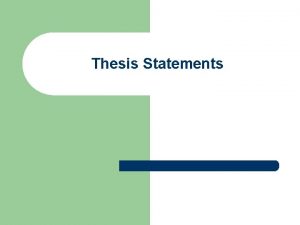Thesis Statements I Generating a Thesis Statement DR


















- Slides: 18

Thesis Statements I: Generating a Thesis Statement DR. TALIA ARGONDEZZI

Your First Paragraph Your reader wants to know: Why am I reading this? Remember: Introduction = ACT Attention Grabber Context/Conversation Thesis Statement (usually the last sentence)

What is a thesis statement? Summary sentence? Argument/Claim

Generating a Thesis Statement STEP BY STEP

Step 1: Topic Question: What do you want to write about in your essay? Example: I want to write about the concepts of liberty and democracy in the Declaration of Independence, the Declaration of Sentiments, and “I Have a Dream. ” Your template to fill in: I want to write about ________________________________________. [Hint: Be specific!]

Step 2: Problem Question: What is something that interests you about this topic, some mystery or intriguing element? Example: The interesting/intriguing/weird aspect about this topic that I want to explore is that Declaration of Independence, the Declaration of Sentiments, and “I Have a Dream, ” are all reactions to the majority oppressing the minority in a democratic society. I want to explore what happens when a majority of democratic voters want to oppress a minority. Your template to fill in: The interesting/intriguing/weird aspect about this topic that I want to explore is ________________________________________.

Step 3: Purpose Question: What is your motive for wanting to explore this? Why does it matter; why is it significant? Example: I want to convince my readers that two concepts that usually seem to work together (liberty and democracy) can sometimes contradict. Your template to fill in: I want to explore this interesting aspect of my topic because I want to convince my reader that ________________________________________.

What Professors Look for in a Thesis Statement NOT OBVIOUS NOT A CLICHÉ

What does “not obvious” mean? Statements of fact are too obvious to be thesis statements (Medea was written by Euripedes. ) Wishy-washy observations are too obvious to be thesis statements (While some might think Medea is a bad person and others that she is good, really she’s a little bit of both. )

What does “not a cliché” mean? A cliché is an idea that is so commonly held and so often repeated, it is no longer considered original or interesting. Medea shows that what goes around comes around. Medea shows that friendship is the most important thing in life. Medea shows that you should stand up for what you believe in. Avoid these clichés like the plague!

Thesis Statement Patterns

Pattern 1: Meaning of the Evidence Through its contrasting river and shore scenes, Twain’s Huckleberry Finn suggests that to find the true expression of American democratic ideals, one must leave “civilized” society and go back to nature. Through [evidence], [text] shows/demonstrates [significance].

Pattern 2: Significance of the Claim Through the drunken speech of Alicibiades, Plato’s Symposium reveals that Socrates affected not only his students’ minds, but also their hearts; therefore, the debate shows us that no intellectual pursuit is strictly rational. Through [evidence], [text] reveals that [claim]; therefore, [text] shows us that [significance].

Pattern 3: Concession and Reasons Although Odysseus’s physical feats are impressive, he ultimately fails to be a hero because his infidelity and cruel leadership show a lack of emotional intelligence. While many may see Trinity as a feminist because she is a strong leader and fighter, The Matrix is overall a misogynist text because she plays a subordinate role to Neo. While/although [concession to opposing viewpoint], [your claim], because/since [evidence].

Pattern 4: Two Explanations So why did Jane Eyre marry Rochester? As the narrator, she claims it’s because she’s in love, but a more comprehensive consideration of Bronte’s historical context would suggest that Jane was getting old and running out of options. [Question]? [Plausible explanation. ] [Better, more complete explanation. ]

Step 4: Make a Claim! Claim: A statement of your position, which other people might not necessarily agree with. Example: While most people think that democracy and liberty are principles that work together in American history, the Declaration of Independence, the Declaration of Sentiments, and “I Have a Dream” reveals that majority rule sometimes causes liberty and democracy to contradict. Your Claim: ________________________________________.

The Center for Writing and Speaking https: //www. ursinus. edu/offices/center-for-writing-and-speaking/

Sources The sample thesis statement for Pattern 1 is from the University of North Carolina writing center website. Pattern 2 is from the University of District of Columbia writing center website. Pattern 4 is from historyprofessor. org.
 Famous thesis statements
Famous thesis statements Thesis statement
Thesis statement Thesis statement example
Thesis statement example Thesis statement
Thesis statement How to write a dbq thesis statement
How to write a dbq thesis statement Mini lesson on thesis statements
Mini lesson on thesis statements Three pronged thesis statement
Three pronged thesis statement Ib english hl essay topics
Ib english hl essay topics The awakening thesis statements
The awakening thesis statements Thesis statement with parallel structure
Thesis statement with parallel structure Whats a thesis statement
Whats a thesis statement Transition thesis statements
Transition thesis statements Apush thesis formula
Apush thesis formula Analytical thesis
Analytical thesis Thesis statement 뜻
Thesis statement 뜻 General statement example
General statement example How to write a proper thesis
How to write a proper thesis Sample argumentative thesis statements
Sample argumentative thesis statements Identity topic sentences
Identity topic sentences
